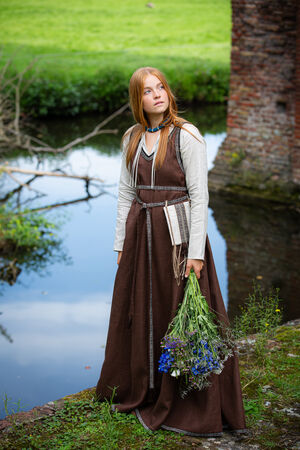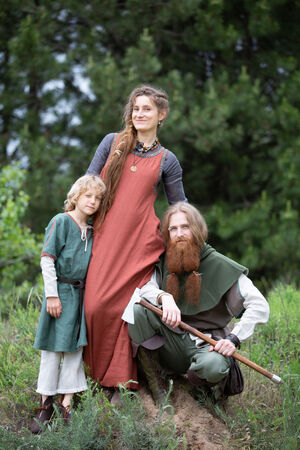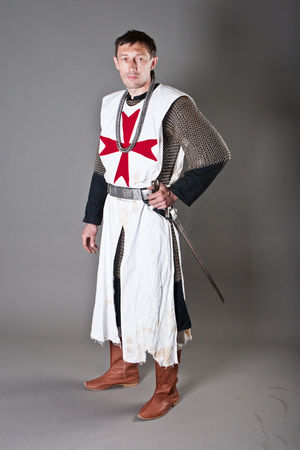Medieval Surcoats and Tabards
Medieval Surcoats for Sale
Custom medieval surcoats are a unique offer from ArmStreet! The fact is that the medieval tradition of wearing one item over another, or several items at a time makes it difficult to identify types of clothing. In vain the manufacturers neglect this "minor" detail of the medieval dress, while surcoat was a mandatory part of both male and female wardrobe throughout the High Middle Ages.
Strictly speaking, there were two garments of distinctive shapes, that one can call "surcoat", and both of them are available in our medieval surcoats store: 1. top ladies' tunic (dress), sleeveless or with short and wide sleeves, with a closed collar; 2. men's mid-calf length cloak sewn on the sides, with false sleeves or armholes; such surcoat with hood was worn by monks.
Origin of Surcoat
Initially, a surcoat was a mere rectangular cloak worn over the armor, with a hole for the head, usually decorated with the coat-of-arms on the back. Mid-century surcoats were worn by knights over the chainmail to protect it from heat in direct sunlight. It also served during bad weather, protecting the easily corroded by rust rings from the rain and mud, as well as from the blood during the battle. Eventually, this cloak became a part of casual clothes, converted into a sleeveless tunic with wide armholes, to accommodate the sleeves of an undertunic or a chemise. It could have slits in the front or on the back and was worn belted or without any belt.
Surcoat Design and Usage
In the late 12th - early 13th centuries new shapes and silhouettes came into fashion. Middle ages surcoats were worn as outerwear, over a tunic (cotta) of different color. The surcoat was equipped with sleeves and became more like a dress, it could have even long narrowed sleeves with a bunch of small buttons or a lacing. Though humble T-shaped silhouette was still at the core of the surcoat pattern, originality was achieved through the of variety sleeves, necklines, fabrics and finishes. The differences in volumes and materials used underlined the status and wealth of the owner. Medieval tailors used a wide range of fabrics such as linen, silk, brocade for finishing, plenty of sound wool of bluish and reddish tones, but the most common colors were black and green. In Spain they even produced vertically-striped and cross-striped fabrics. Two-colored and striped surcoats were usually worn by street musicians and jugglers. Initially surcoat had one front slit, and later they added two slits on the sides for ease in the saddle. Miniatures often show the hems of men’s surcoat held in at the waist by a belt. Women's surcoat was usually long or very long, so they had to lift the hems of the skirt for ease of movement.
Noble Surcoats
Heraldry clothes became popular for peacetime purposes towards the beginning of the 14th century. Lords wore surcoats decorated with coat-of-arms and clothing of their servants was dyed in the appropriate colors. Fashionable sleeveless surcoat was made of expensive tissues with a sole front slit or two side slits. Some surcoats were hanging freely, other were close-fitting, but the most beautiful were very long in front and back, and those who wore them had to lift the hem of her walking, showing fur or contrasting fabric lining. This long, ankle-length dress was a noble prerogative, it was worn over numerous layers of garments and decorated with train. Ladies' surcoat had a deep neckline and wide slits on either side, from shoulder to the hip. Later, it became more shaped and eventually cut away to become the sideless surcoat, then the super-cotehardie.
Why should you buy medieval surcoats?
- to avoid overheating in the sun - wear it over armor;
- to protect armor from rain, which is important if it's mild steel;
- to show noble origin - with a coat-of-arms surcoat;
- to demonstrate prosperity and wealth - use luxurious fabrics and fur.










